If you’re just starting out in food photography or struggling with limited resources, it can be easy to imagine that a lack of lighting equipment is holding you back.
It’s a reasonable assumption. But it also happens to be wrong.

To shoot awesome food photography you really don’t need a whole stack of expensive lights. In fact, often the opposite is true; too much gear can just get in the way of creativity. Whereas a minimal setup frequently encourages resourcefulness.
To show that you don’t need a lot of expensive lighting equipment in order to produce great-looking food shots, I thought it would be inspiring to put together a guide to one light photography – but using that light to create a variety of quite different food photography looks.
Not only can a diverse range of lighting effects be produced with just one light, but in my experience photographers learn faster and better when they can see exactly what impact variables such as angle, distance, and modifiers are having on their lighting setups. And to achieve this, it’s better not to muddy the waters with additional light sources.
So let’s jump into our one light, five ways setups…
1. Unmodified
An unmodified flashgun, strobe or LED continuous light will be a very small light source, which creates that high impact, hard light look.
It’s about as close as you’ll get to the harsh glare of midday sun, meaning that this is a technique that is particularly good for picnic- or barbecue-themed shots – indeed, any situation where you want everything to look bright, bold, and sizzling hot. It’s also a good one for graphic food shots on solid colour-block backgrounds. Always eye-catching on social media!
In fact, as important as light modifiers are, there’s a lot to be said for the quality of light produced by the bare bulb of a single LED unit or flash head. With nothing to modify the quality of light, photos shot with a bare head will usually display even illumination and crisp, dark shadows.
Whilst a multi light setup, with a variety of different modifiers will often work well for more complex setups, arguably an unmodified light source actually produces the best results when used entirely on its own, as a one light photography solution. If you find that the shadows are too dark, you can easily bounce some light back in with a reflector or sheet of white card.
We have everything you need to get started with continuous artificial light, click the link below to get started.
2. 7x9ft Scrim
The quality of soft light produced by a north-facing window is legendary. Super diffused and flattering on any subject, it’s no wonder that the Dutch Masters were so fond of the effect.
Ever wished you could have a north-facing window in a south-facing room? Well, with a single light head and a huge sheet of scrim you can achieve a similar effect anywhere you want, and at any time too! Convenient!
This is a great lighting setup for a variety of food photography situations; large table scenes often require a large light source for even lighting, making a large scrim the perfect choice, but even smaller subjects do well with large light sources if you’re going for that ultra soft look. Easily among the most versatile one light photography setups out there!
3. 120cm Softbox, Double Diffused
Softboxes diffuse light in two ways. Firstly they work similarly to the scrim I used above, in that they are typically covered at the front with a sheet of diffusion material that diffuses light. As we saw with the scrim, this produces shadows with less defined edges. It also leads to a reduction in contrast between shadow and highlight areas, too, as those now super bendy light waves will even bounce into areas that don’t receive direct illumination.
But a softbox also adds an extra degree of diffusion that cannot be achieved by scrim alone. This is because the inside of a softbox is typically lined with a highly reflective material that bounces the light around before it even hits the front diffuser. And the more light bounces off in different directions, the softer it becomes.
Yet despite the added degree of diffusion provided by a softbox, the fact that the sides of the softbox are closed means that it creates a slightly more directional effect than is created by a simple sheet of scrim. With the scrim alone, light flies around the room at all angles; typically making for more even lighting. But with a softbox, you have a degree of control over the direction the light comes from, and this produces a subtly different look. One that is both soft and directional at the same time. Unsurprisingly, then, a big soft box is probably the most popular one light photography solution out there.
4. 1×4 Strip Softbox
This shot was produced using a softbox that is essentially the same as the one above in every respect but its shape. And if the big octagonal softbox was already more directional than the open-sided scrim, this narrower slit of a softbox is like a beam of light falling through a long, thin window.
As you can see, the light is still nicely diffused, but the degree to which it spills out onto the subject has been significantly restricted. This has two effects. Firstly, it means that you can be more selective as to which parts of the shot are illuminated; for example, lighting one area fully, while allowing the intensity of light in others to drop dramatically. This technique is often used to illuminate a subject without letting too much light fall onto the background – perfect for dark and moody food photography.
Related: Easy Dark and Moody Lighting Setup
5. Snoot
A snoot is a small, cone-shaped modifier that goes directly over your light source to make a really small, concentrated beam of light. Normally a snoot is used as a secondary modifier in a multi-light setup, but it can create some fun effects when used as the key light in a scene.
In this shot, I positioned the snoot fairly close to the drink so that the light still had a soft quality, but was very focussed in a spotlight style. This kind of lighting is quite unique in food photography, but it’s always good to put yourself to create something different that will stand out from the crowd.
Final Thoughts
If you’re still developing your food photography lighting skills, I’d strongly encourage you to spend a good amount of time experimenting with one light photography before expanding your repertoire into multi light setups. Stick to a single light source for now, and instead invest your money in a versatile set of modifiers before adding more lights to your arsenal.
In any lighting setup there are a ton of variables that will subtly alter the final result: from the size of the room you’re working in to the color of the walls and the finish of the surfaces in your shot – and much more. By starting out with just one light, you will develop a strong understanding of these variables and the effect that they have on lighting.
As we’ve seen, a lot of very different looks can be achieved with one light photography. And by really learning how to get the most out of a single light source, you’ll be in a much better position to take full control of your lighting setups once you do add more gear.
Learning how to use Manual Mode is the most important thing you can do for your food photography. Enroll now!
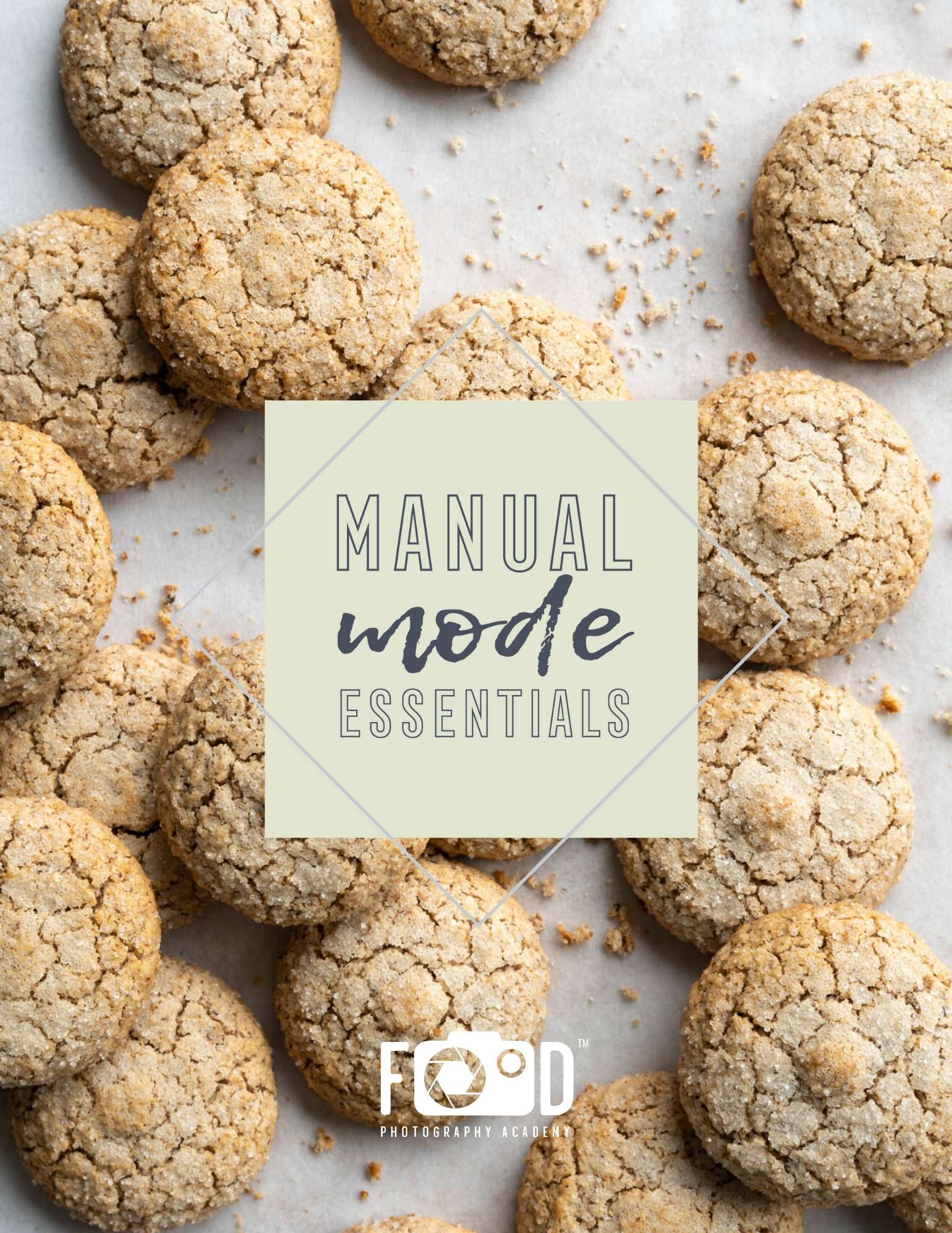
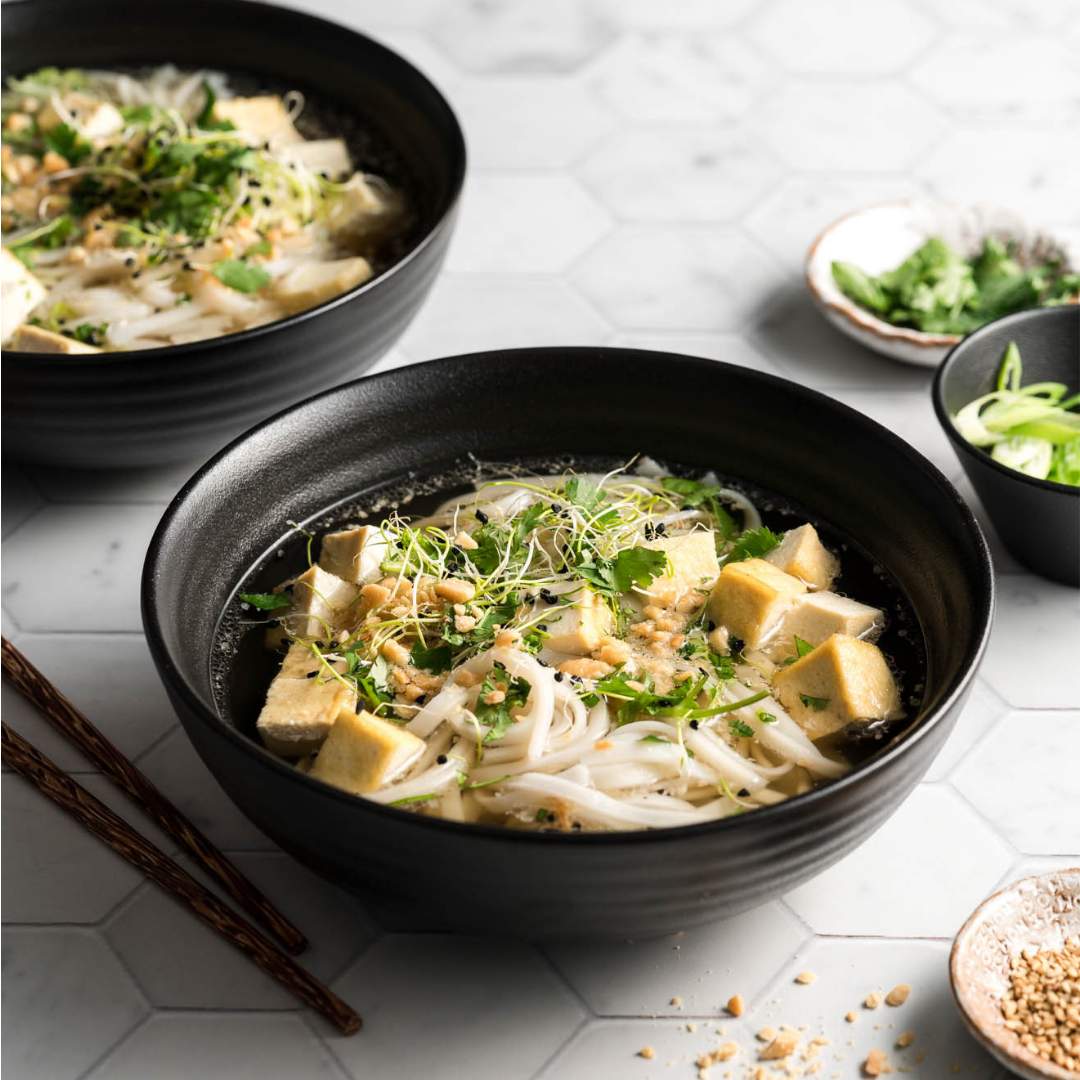

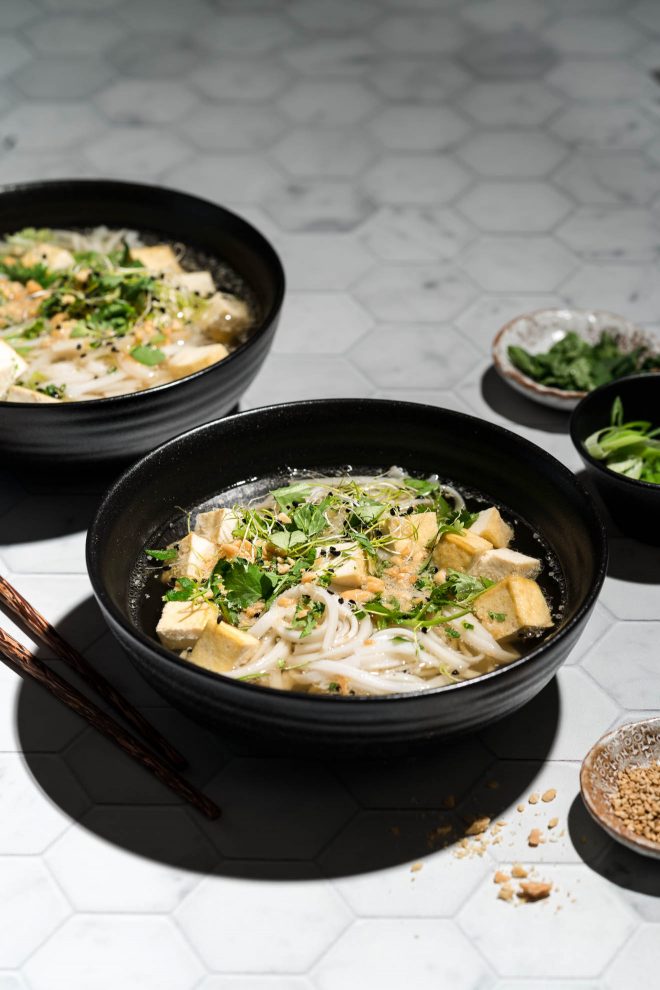
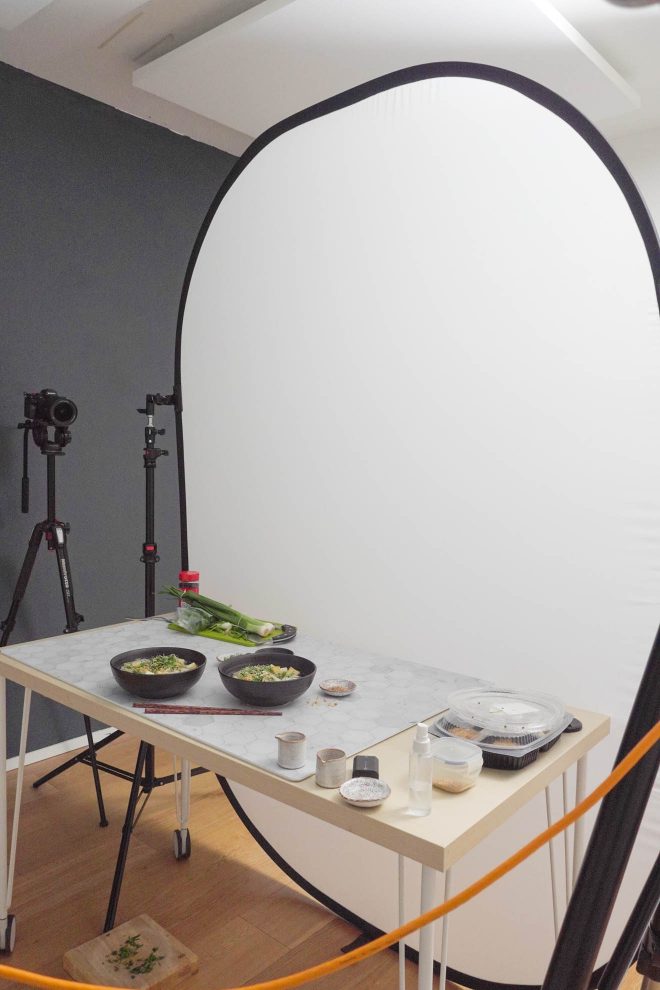

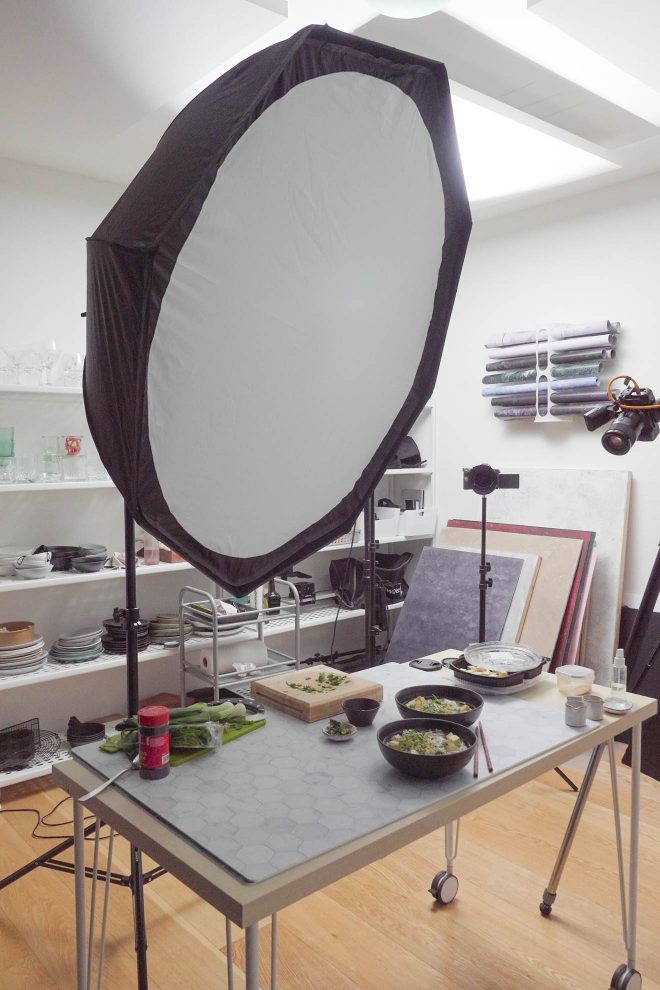
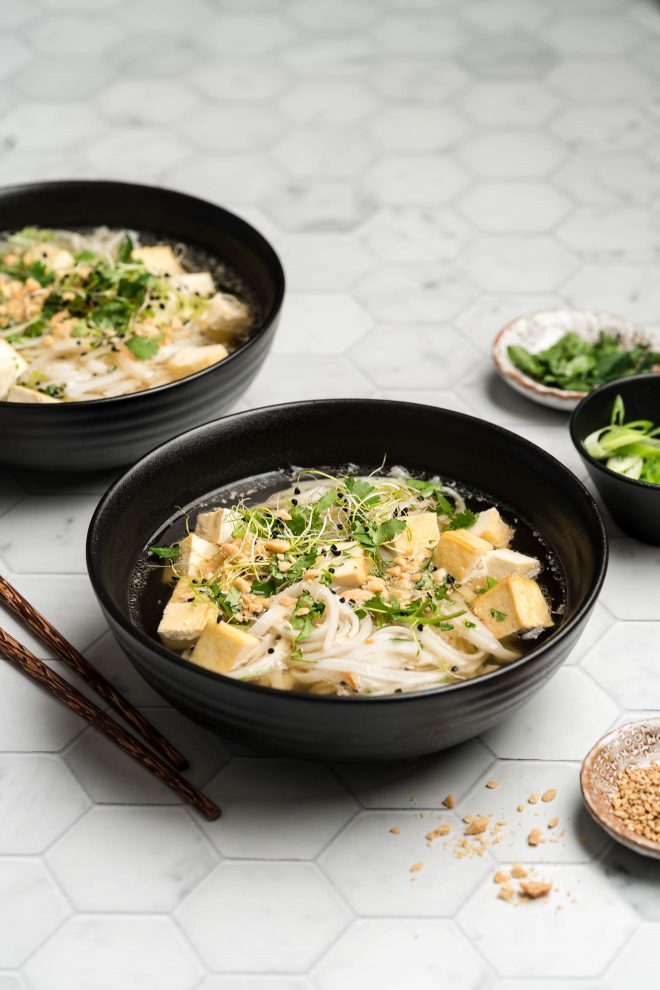
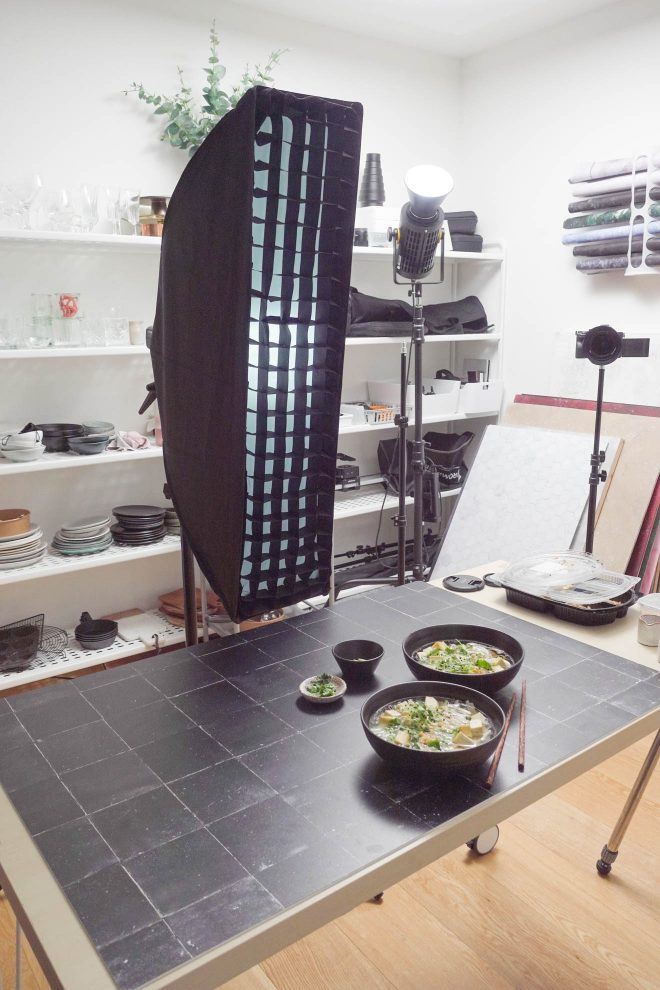
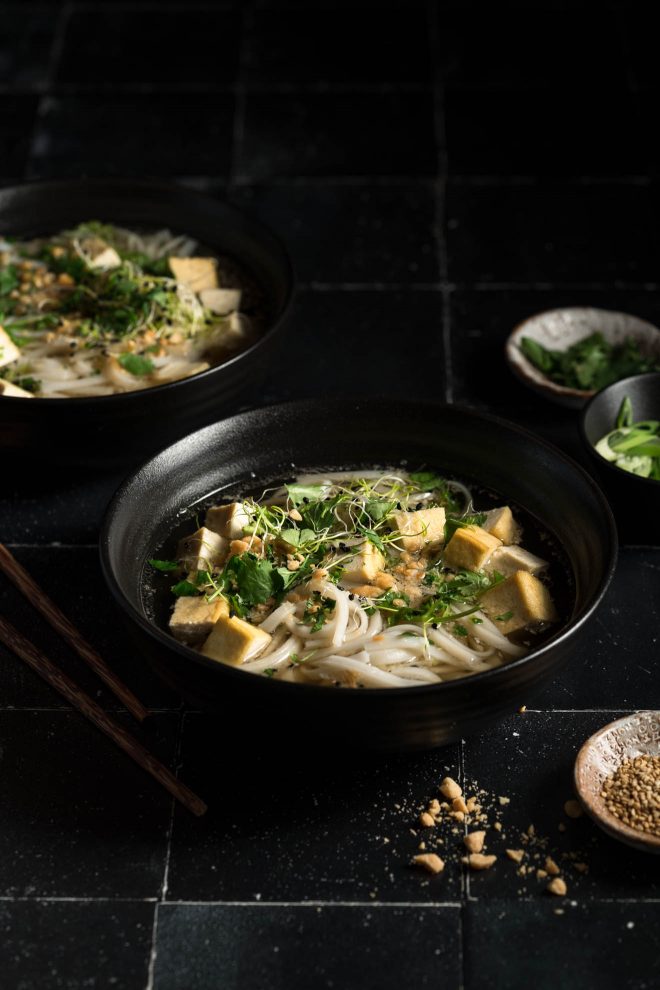
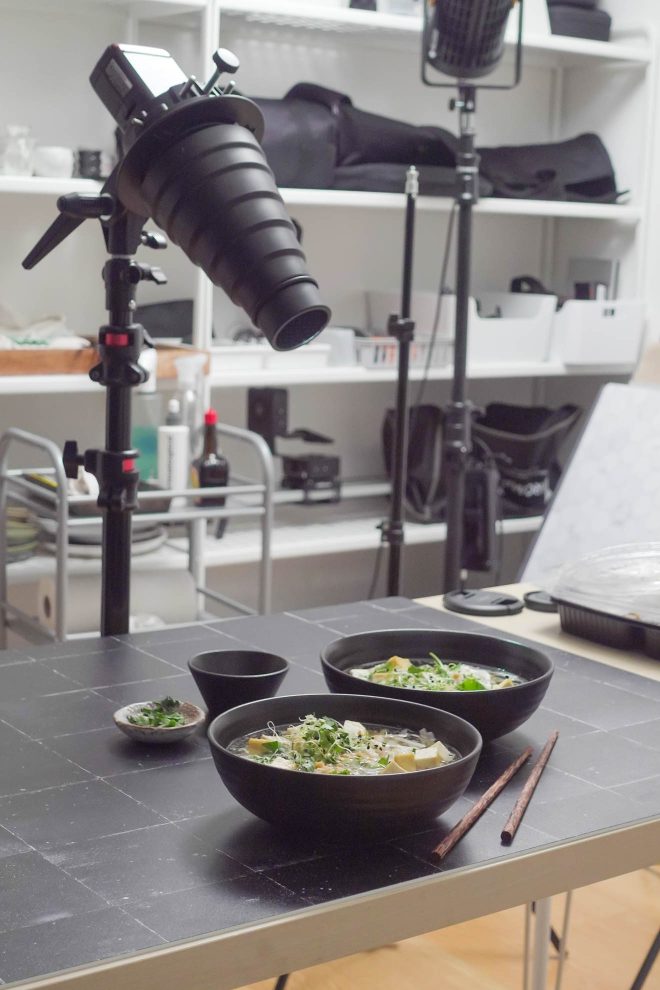
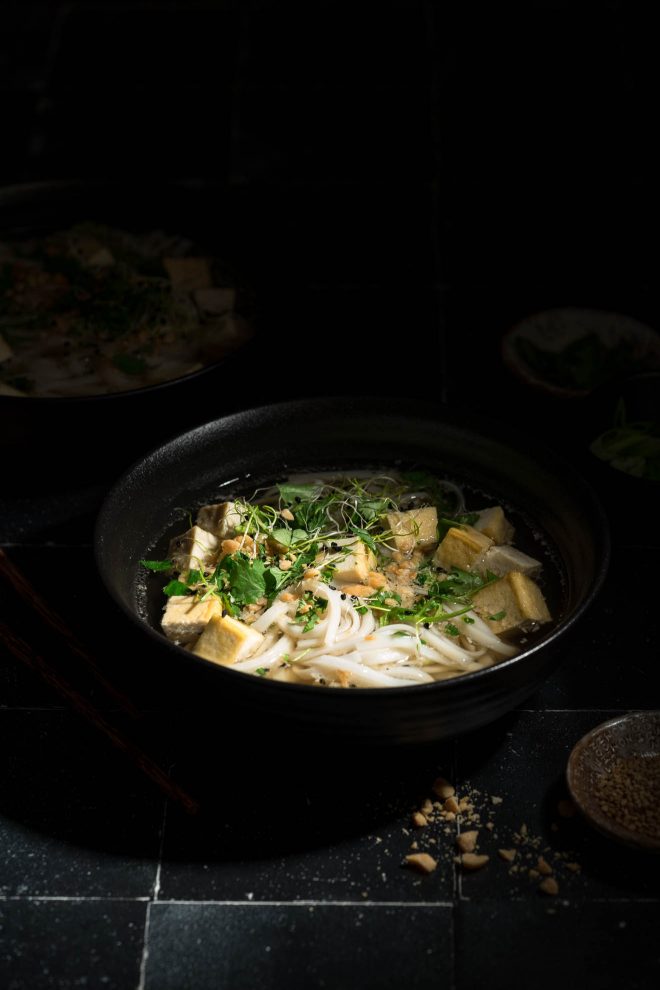
Hey,
such a good article! Do you mind sharing where you can get such a big scrim? I can only search up to 150×200 cm ones. Thank you!
I got mine on Amazon years ago, but honestly I think 150cm x 200cm is plenty big enough for food photography!